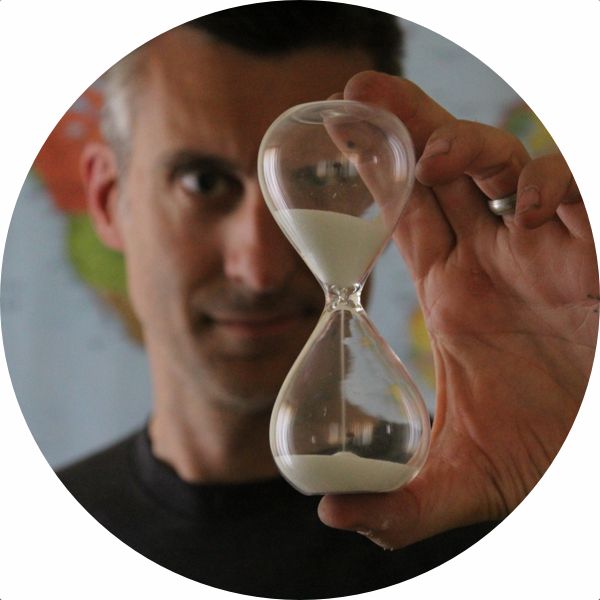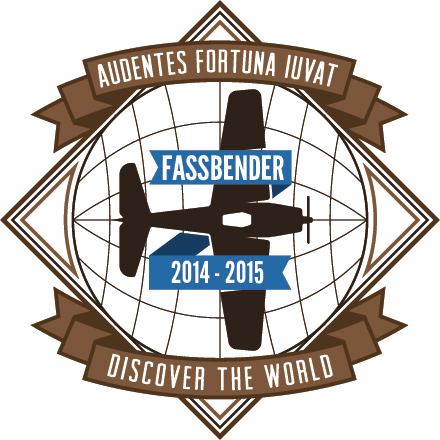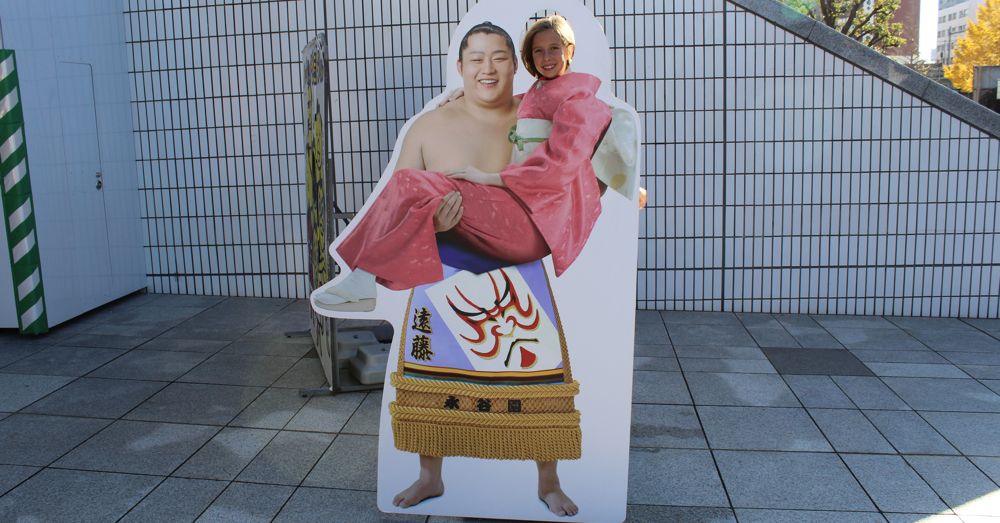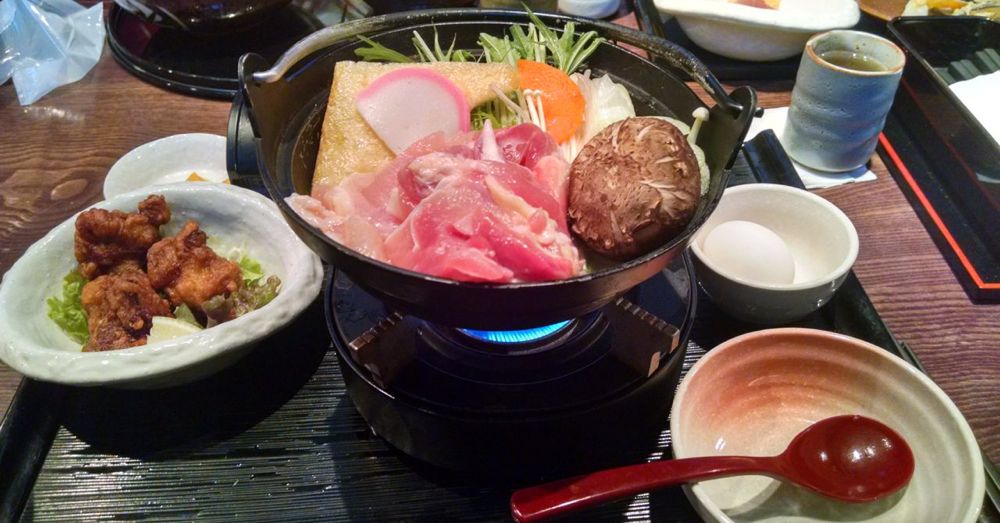Thursday, 27-11-2014. Day 99.
Big Day in Tokyo
We had planned a walking tour of Tokyo for this morning, so we got up a little early, had our typical Lawson's breakfast, and got ready to meet our guide. But before that happened, I took a quick jaunt over to the Chinese embassy to pick up our ...
Chinese visas!
Interestingly, we were granted a period of 10 years to use our Chinese visas — they were good from 26-11-2014 to 26-11-2024 — and they allowed us to stay in the country for 60 days from the day we entered. While that was very generous and a little surprising, we were happy that we had them, and once I figured out how to use the machine to get the tickets to pay for them, this extended chapter of our story had, thankfully, come to a close.
Not long after I got back to the apartment, we met up with Makoto, our guide from Travelience. We walked to the local subway stop and he gave us a quick tutorial on how to use the subway (a lesson we put to good use in the coming weeks) and rode the subway all the way to Asakusa.
Asakusa
The first thing we learned when we exited the subway station was that in Japan, you need to make an appointment to eat (or even just pick up an order) at KFC on Christmas Day. Allegedly, the Japanese people, in search of a proper Christmas dinner, turn to KFC. I can’t confirm or deny this, but I can tell you the good Colonel was all dolled up for the holidays.
We strolled a short distance to the Kaminarimon, also known as the Thunder Gate, which is marked by the giant chōchin (lantern) that hangs over the entrance and the statues of the two Shinto gods of wind to the east and thunder to the west.
This gate has burned down a number of times over the years, but it’s always been rebuilt. It is the gateway to the Asakusa district, which is where we visited two temples, one Buddhist and one Shinto, as well as a really active shopping section called the Asakusa Nakamise Shopping St.
After we strolled down the street browsing in all the shops, we stopped at the fortune-telling. Frankie went first and got the second-best fortune. Then Jackie went,and when she got her number, Makoto said something like, “Ay!”
I winced, figuring she’d gotten a bad fortune, but Makoto said it was the best fortune a person could get. Most of the fortunes are bad, and it’s rare to get a good one, let along two good ones.
Now that we were feeling fortunate, we took a moment to purify ourselves, both with smoke and water, then entered Sensō-ji, the Buddhist temple. Sensō-ji is said to still house the original golden statue of Buddha that two fishermen brothers caught in their net way back in the early 600s, thus prompting a rise of Buddhism in the area.
We then traveled next door to the Asakusa Shinto Shrine, which honors the three men who founded Sensō-ji (the two aforementioned fisherman brothers plus the wealthy devotee of Buddha who had the idea to start the Buddhist temple).
SUMO Restaurant
Lunch time was upon us, and we were off to a sumo-themed restaurant near the Edo-Tokyo Museum (one of the stops on the agenda).
On our way there, we stopped at a store that sold tsukudani, a type of snack food that's made with rice wine and soy sauce. Makoto always picks up a few snacks there when he passes by. There were many different kinds and many of them were free to sample. Frankie wanted to try a grasshopper ... kind of. She didn’t want to eat the legs, so I ate the back half and she ate the front half.
After another, shorter subway ride, we arrived at Hananomai (at least I think that’s where we ate; everything was in Japanese), a sumo-themed restaurant next door to the Ryōgoku Kokugikan Sumo Stadium. Unfortunately, we missed sumo season, so we didn’t get to see any sumo matches or practices or even sumo wrestlers.
But we did get to eat chankonabe, the traditional meal of the sumo wrestler. I chose the game cock (for fighting prowess) variant with a side of fried chicken. It came raw and I got to cook it in an iron pot, sort of like hot pot or shabu shabu. It was delicious and quite filling.
Edo-Tokyo Museum
A replica of a street in old Edo.
After we ate, we waddled over to the Edo-Tokyo Museum, a really comprehensive three-story historical tour featuring very detailed exhibits celebrating the history of Edo from its feudal roots through its exposure to the West and then its rapid transition into modern day Tokyo.
Akihabara
Speaking of modern-day Tokyo, we arrived at Akihabara just as night started to fall, which is a good time to visit. Nicknamed Electric Town, every street in the district glows.
It's the epicenter of Otaku culture, loaded with manga shops, maid cafes, and more electronics stores than you can count. Makoto took us through the heart of it as we wandered down the streets and through narrow malls filled all manner of toys, models, and vintage electronics.
He also took us on a walk through the underbelly of Akihabara, where you could find pretty much any part for any electronics project you could imagine. The alley we walked down had a very low ceiling was jammed with all sorts of small stalls, each specializing in a different type of electronic gadget or part.
The sun had set long ago, and we had done a lot of walking for the day. Plus, it was starting to get a little cold, so we decided to call it a night. We said goodbye to Makoto, thanking him for a great and educational day, and hopped on a subway back home, but not before we stopped at a Burger King to try the famous Kuro burger.
Notable Statistics:
iPadographers: 8 (minimum)
Subways: 4
Maid Cafe Hawkers: 4
Electronics Vendors: Countless

Tom Fassbender is a writer of things with a strong adventurous streak. When not adventuring, he’s been known to enjoy a cup of coffee or two. You can find him at Facebook and Instagram.
This post may include affiliate links which helps to support this site. As an Amazon Associate, we earn commission from qualifying purchases at no extra cost to you.





























